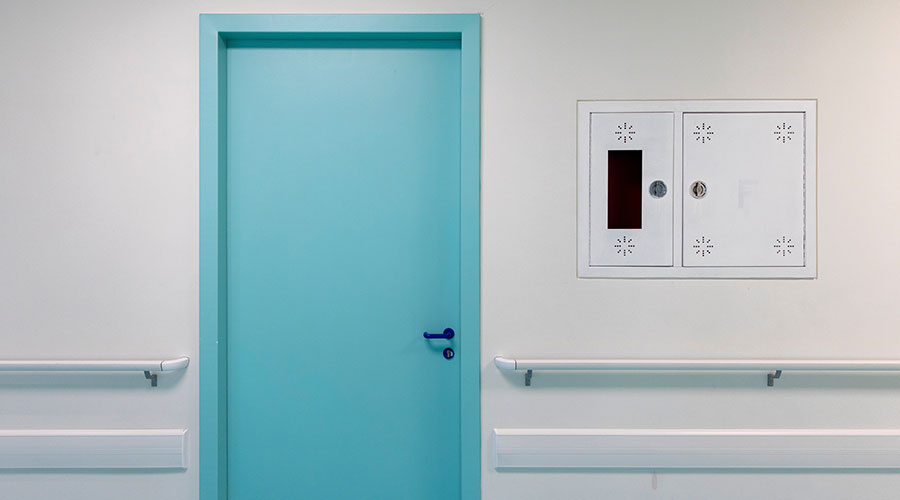How Soundproof Doors Help Reduce Noise Levels

Patients need a peaceful environment to fully recover. However, healthcare facilities can be rather noisy settings, and that noise can impede upon the patient’s recovery rate. Fortunately, there are many soundproofing methods to mask and block out loud sounds, and doors happen to be one of those methods. In this manufacturer roundtable, Healthcare Facilities Today speaks with door manufacturers about how soundproof doors help patients heal and recover in noisy environments.
How do soundproof doors help reduce noise for patients who are trying to heal and recover?
“Soundproofing doors is achieved via the materials used in the door, and the seals provided for the door, within the door frame, and points where the leave and frame engage, and where the frame engages with the opening.”
— Kevin Mayer, commercial director, PurOptima
“Soundproof doors are often designed with features and materials aimed at reducing sound transmission through the door. Materials are selected to absorb and dissipate sound in the door and glass. Acoustic glass is typically comprised of layers of glass separated by air that can dampen sound waves. Sealing of air gaps around the door panels is also important to reduce pathways that can conduct sound through the door. Many automatic doors for ICU rooms, for example, can be optionally equipped with acoustic glass to create a calmer and quieter environment for recuperating patients.”
— Brian Ha, product manager, STANLEY Access Technologies
“Healthcare facilities must be set up to make patients feel as calm and relaxed as possible. Setting a more tranquil mood is essential for ensuring the sick and injured know they are in good hands and aren’t under more pressure in an already difficult time.
Lack of privacy in waiting rooms, patient rooms or anywhere else in the healthcare industry can cause stress and anxiety for patients.
Many automatic door options can provide noise-dampening and soundproofing benefits, allowing for better patient-doctor confidentiality. Door packages such as the Smoke-Rated Acoustic STC-35 ICU Swing™ Door are designed and tested to meet STC-35 Sound Transmission Class Rating in accordance with ASTM E413-04 which ensures comfort and privacy for staff and patients.”
— Ashley Estrada, product manager, Horton Automatics
“Soundproof can be a bit of a misnomer as very few truly “soundproof” doors exist for use in commercial spaces that require ADA compliance. There are however a wide range of swing and sliding doors designed for acoustical isolation that are designed with good perimeter seals, automatic door bottoms, sound isolating materials like laminated glass and engineered wood cores. These systems perform multiple talks related to acoustics.
With respect to privacy, acoustic doors can provide patients and providers in both inpatient and outpatient settings speech privacy aligned to HIPAA and FGI guidelines, ensuring their verbal communication and speech is safeguarded to a reasonable level in clinical or hospital settings. This enhances their standard of care by allowing open exchange of information. Acoustic doors also provide patients and providers with isolation from the significant noise levels that are present in healthcare environments, which negatively impacts patients’ ability to rest, recover and heal. These noisy environments also impact providers and their level of fatigue and can contribute to communication or medical errors, thus creating provider spaces with acoustic isolation can also directly impact patient care.”
— Tysen Gannon, business development and marketing consultant, AD Systems
Jeff Wardon, Jr. is the assistant editor for the facilities market.
The post "How Soundproof Doors Help Reduce Noise Levels" appeared first on Healthcare Facilities Today

